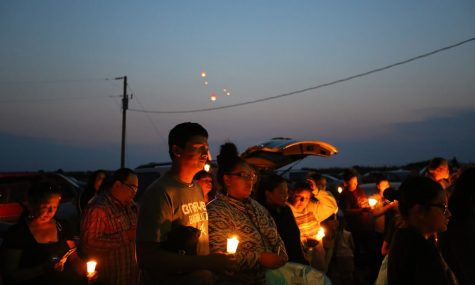Suicide Crisis on Reservations
POSTED March 19, 2018

In most American families, parents are overjoyed as a result of the happiness and success of their teenage children. Across America, teenagers are enjoying their “rite of passage,” such as hanging out with friends, attending after school activities, vacationing, and even getting their first car. At the same time, little is known of the extreme poverty and despondency existing within the reservations of the Native American Communities. Many Native American families are still struggling with the pain and anguish their ancestors suffered during the ethnic cleansing and forced relocation of the 1800s known as the Trail of Tears.
A long family tree of mistreatment and undue suffering in addition to the present lack of resources and poverty results in considerable distress among tribal members and families living in the majority of reservations today. The outcome of this distress and despair, many Native American families living in reservations have been torn apart by alcohol, drugs, and family violence which have become rampant within their communities. Daily life on reservations can be hard on the youth depending on their living situations and the constant negative influenced by adults on the reservations. Kids end up being the parents in the house because the parents are not stable enough to either take care of or feed their own children. Native American youth are also twice as likely to be exposed to domestic violence, sexual abuse, substance abuse, and poverty compared to other groups.
As the struggles in life continue to grow, many people find that they run out of coping mechanisms. It may only take one small act to send a person over the edge where they may contemplate or even commit suicide. For some, it could be a break up with a significant other, a loss of a employment, or an illness in the family. For others, it could be something that is seemly insignificant in another person’s life but could represent an insurmountable obstacle for someone else.
A suicidal person may not ask for help, but that doesn’t mean that help isn’t wanted. Most people who commit suicide don’t want to die, they just want to stop hurting. Recognizing a suicidal person may be noticing that they are starting to distance themselves, seeing marks on their body, and taking what they say or how they feel seriously. If you think a friend or family member is considering suicide, you might be afraid to bring up the subject. But talking openly about suicidal thoughts and feelings can save a life. Suicidal behavior is complex. Some risk factors vary with age, gender, and ethnic group and may even change over time. The risk factors for suicide frequently occur in combination. Research has shown that 90 percent of people who kill themselves suffered from depression or another diagnosable mental or substance abuse disorder.
Suicide looks very different in native communities than it does in the general population. Nationally, suicide tends to skew middle-aged, but among Native Americans 40 percent of those who die by suicide are between the ages 15 and 24. Rates of suicide for Native Americans are the highest at 22.5 percent with 34.3 percent of men and 9.9 percent of women, and they keep increasing over the years, according to an article on suicide rates from Time.com. It is unsettling how little attention the high rates of suicide are receiving. This is a national crisis and is the leading cause of death for indigenous people, it must be addressed immediately, the epidemic of children taking their lives is unacceptable and must be investigated.




